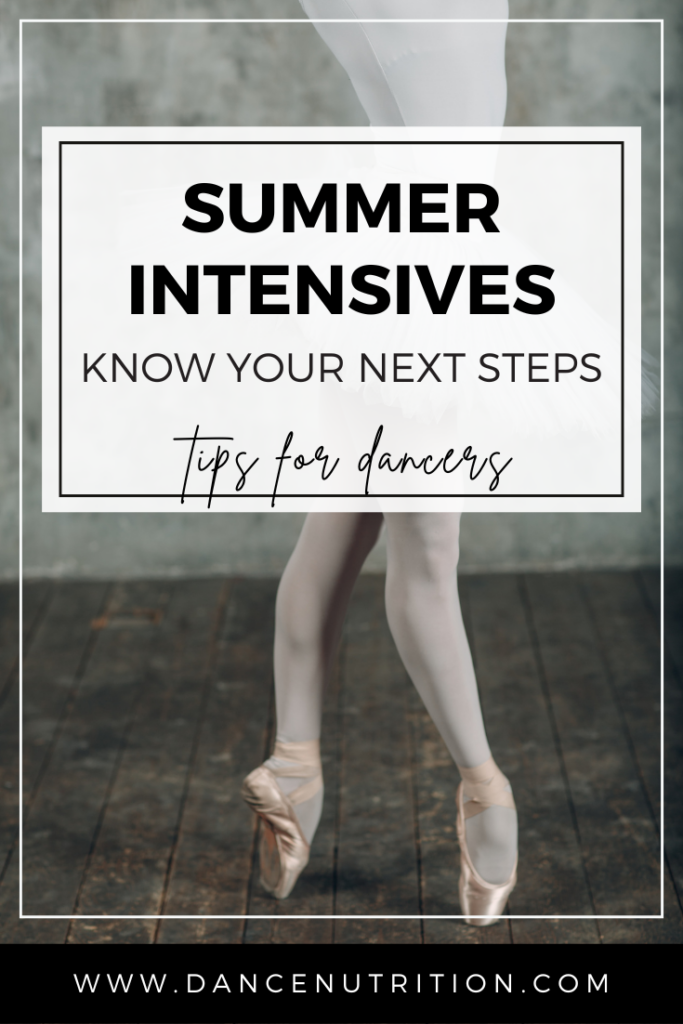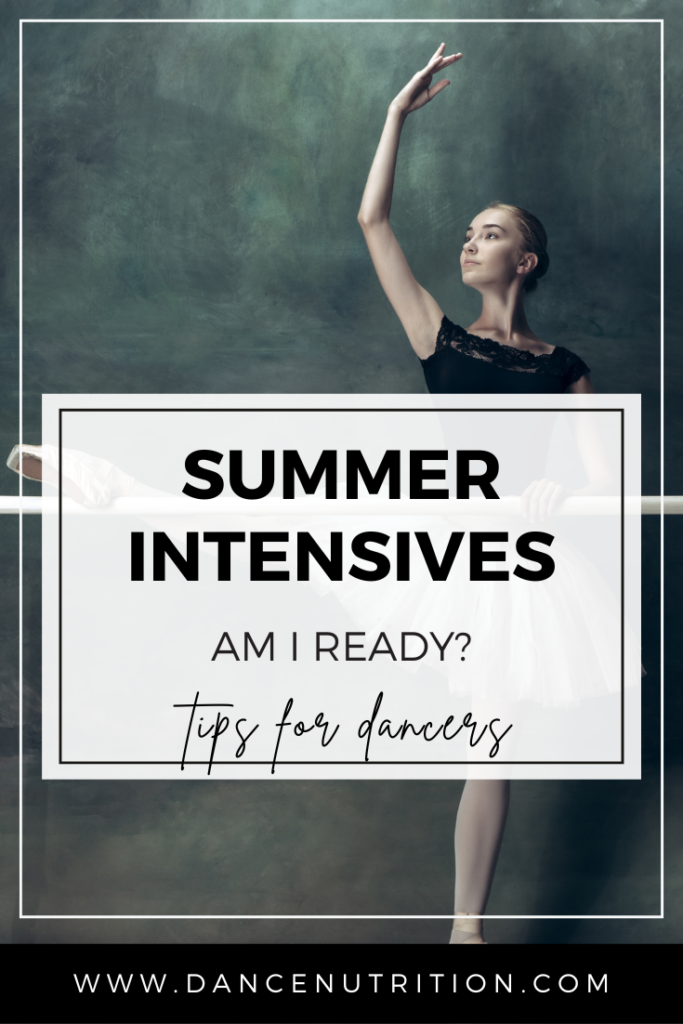Summer intensives offer a unique opportunity for dancers to refine their technical skills and make important career connections. However, the intense competition and pressure to perform can also bring significant stress. Traveling to distant programs, adjusting to unfamiliar foods, and living in dorm-style accommodations all present new challenges.
One often overlooked reality is that summer intensives can contribute to mental burnout and overuse injuries. Deciding whether a dancer is ready for an intensive involves assessing not just their physical abilities but also their mental resilience. To help guide this decision, I spoke with Erica Hornthal, a dance/movement therapist, who shares strategies for navigating the three most common challenges dancers face during summer intensives.
Types of Summer Intensives for Dancers:
When deciding whether a summer dance intensive is right for you, there are a few factors to consider like travel, accessibility, and cost. Whether you’re looking to stay local, travel abroad, or even train from home, each of these intensives offers unique opportunities for growth and development.
#1: In-Person Intensives
- Held at renowned studios or conservatories.
- Typically offer rigorous daily training with a focus on various styles (ballet, character, contemporary, jazz, etc.).
- Often feature guest instructors, performance opportunities, and auditions.
- For those abroad, offers a unique opportunity to immerse in another culture while training intensively.
- May involve dorm facilities or apartment-style living.
#2: Virtual Intensives
- Online programs that allow dancers to participate from anywhere in the world.
- Often include live or pre-recorded classes in a range of styles, such as ballet, contemporary, or jazz.
- Flexible scheduling and the ability to access world-class teachers remotely.
- Often most feasible and accessible for dancers recovering from injury.
#3: Local Studio Intensives
- Hosted by local dance studios or smaller regional schools.
- Offer focused training without the need for travel, which is ideal for dancers who prefer to stay close to home.
- Often specialized in particular styles or cater to certain age groups or skill levels.
#4: Ballet-Focused Intensives
- Intensive programs designed specifically for classical ballet training.
- Focus on building strength, technique, and artistry, emphasizing barre work, jumps, partnering, and classical variations.
- Ideal for dancers seeking to improve their ballet technique in preparation for auditions or company work.
#5: Contemporary/Modern Dance Intensives
- Focus on contemporary or modern styles, with a blend of jazz, modern, and other dance genres.
- Often includes choreography, improvisation, and performance opportunities.
- Great for dancers looking to diversify their skill set and gain experience in current dance trends.
#6: Multi-Disciplinary Intensives
- Includes training in jazz, tap, ballet, and theater dance styles, alongside vocal and acting coaching.
- May emphasize rhythm, style, and energetic movement, often focusing on performance and choreography.
- Ideal for dancers aiming to work in the commercial dance industry or for those interested in high-energy styles.
- Perfect for dancers who want to explore and expand their versatility in various dance forms.
Next Step: Know What’s Ahead
#1: The Pressure of Cut-Throat Competition
Intensives are undeniably competitive. They drive motivation but can also fuel perfectionism, leading to feelings of inadequacy. As Erica explains, “An intensive can easily exacerbate these feelings.” When dancers pair high expectations with low self-esteem, it creates a dangerous cycle of cognitive and body image distortions.
What to Do: Break the cycle by developing a proactive plan to challenge negative thoughts. Prioritize reducing body checking and mirror obsessions, and commit to daily journaling to celebrate even the smallest victories— this can significantly shift your mindset. Use positive affirmations to build self-esteem and focus on strengthening qualities like empowerment, resilience, and self-awareness. If comparisons are undermining your mental well-being, take time to reflect on this article for deeper insights. Nourish The Healthy Dancer® Cultivate Confidence is a course I’ve created to help dancers redefine their personal ideals, improve body image, and transform negative thought patterns surrounding food and body. Click here to learn more about this powerful resource.
#2: Combatting Negative Body Image
Intensives often create a hyper-competitive environment where body shape and weight become a focal point, especially with auditions starting on Day 1. It’s important to remember that your body weight, shape, and size are influenced by many factors beyond your control, such as genetics and hormonal fluctuations. Trying to micromanage your diet to alter your body can be distracting and ultimately harmful to your performance.
What To Do: As Erica points out, “A summer intensive isn’t the place to ‘fix’ body image concerns— it’s an opportunity to bring awareness to the habits that perpetuate negative body image.” If you catch yourself checking your body in the mirror, practice redirecting your attention. Reflect on your purpose for attending the intensive. Are you there to learn and grow, or are you focused on external validation? To foster a more supportive body image, keep a journal of body-neutral affirmations and engage in practices to reduce negative body talk. If looking for more resources, try my 5 Days to Body Confidence Challenge and explore this article to support your journey.
#3: Managing Food Stress
Summer intensives can be physically demanding, and your nutritional needs will likely increase. Without proper fueling, you could risk Relative Energy Deficiency in Sport (RED-S)— a condition caused by insufficient calorie intake to support physical activity and bodily functions. This can lead to increased injury risk and burnout.
What To Do: Prioritize eating enough throughout the day. Due to the busy schedule of intensives, calorie-dense snacks between meals are essential for keeping your energy up. If you’re struggling with RED-S or suspect you might be at risk, it’s important to consult with a healthcare provider, including a Registered Dietitian Nutritionist and a licensed mental health professional. Together, you can create a sustainable nutrition plan that supports both your physical health and your performance goals. For more tips on fueling during intensives, check out this article on how to become a success story at your summer intensive.
Key Takeaways: Should I Attend A Summer Dance Intensive?
Here’s what I wish I had known when attending the many intensives from my past. In the end, whether you attend a summer program or take the time to focus on your mental and physical health at home, remember this: There’s no one-size-fits-all answer. The right choice is the one that supports your growth and career longevity.
If you’re feeling torn, let me reassure you: a summer spent at home will not determine your career trajectory. What matters most is how you use this time to address your mental and physical health. If you decide to attend an intensive, take steps to ensure you’re in a strong position both mentally and physically.
Summer At Home: A Virtual Dance Intensive
If an in-person program isn’t feasible this summer, consider seeking virtual workshops to maintain engagement and inspiration. The Healthy Dancer® Summer Intensive is an example. It’s designed to help dancers fuel their bodies and maintain overall well-being during the intense training months. It combines nutrition education with practical tools to support a balanced and healthy approach to training. For more information, check out the details here.




